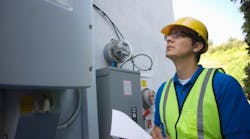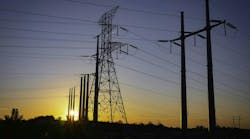Business customer satisfaction with their electric utility is up substantially year over year, with significant improvements in communications, corporate citizenship and price satisfaction, according to the J.D. Power 2016 Electric Utility Business Customer Satisfaction StudySM released today.
The study, now in its 17th year, measures satisfaction among business customers of 102 targeted U.S. electric utilities, each of which serves more than 25,000 business customers. In aggregate, these utilities provide electricity to more than 12 million customers. Overall satisfaction is examined across six factors (listed in order of importance): power quality and reliability; corporate citizenship; price; billing and payment; communications; and customer service. Satisfaction is calculated on a 1,000-point scale.
Overall satisfaction among electric utility business customers is 704 in 2016, a significant increase from 677 in 2015 and the highest level in eight years. Performance improvement in 2016 is driven by a sharp year-over-year rise in satisfaction with communications (+55 points), corporate citizenship (+45) and price (+43).
“Communication and corporate citizenship are important to businesses,” said John Hazen, director of the energy practice at J.D. Power. “Providers are doing a better job of proactively communicating with their business customers not only during an outage, but also on a regular basis to keep them informed of things such as energy programs offered, and to gather customer feedback.”
Hazen noted that corporate citizenship demonstrates that a provider is an active business partner in the community. “Business customers like to see their provider giving back, whether it’s through charities and civic organizations or through economic development such as buying locally and creating jobs,” said Hazen. “Price is important to business customers, but not as critical as it is to residential customers.”
Study Rankings
Within each of the four geographic regions included in the study, utility providers are classified into one of two segments: large (serving 85,000 or more business customers) and midsize (serving between 25,000 and 84,999 business customers).
Among the eight providers that rank highest in their respective regions, only two—Omaha Public Power District in the Midwest region’s midsize utility segment and SRP (Salt River Project) in the West region’s large utility segment—also ranked highest in 2015.
“There are 53 ranked providers with an overall satisfaction score above 700 this year,” said Hazen, who noted that in 2014 only four providers achieved scores of 700 or higher. “This clearly demonstrates that when providers make an investment in customer satisfaction and put in the effort, they can improve their customers’ experiences.”
The following utilities rank highest in business customer satisfaction in their respective regions:
- East Large: Con Edison
- East Midsize: Met-Ed
- Midwest Large: Ameren Missouri
- Midwest Midsize: Omaha Public Power District
- South Large: Entergy Arkansas
- South Midsize: JEA
- West Large: SRP
- West Midsize: SMUD
KEY FINDINGS
- A Partner in Power: Overall satisfaction amongbusinesses with an assigned account manager at their utility is more than 100 points higher than among those that do not have an account manager.
- Billing Alerts Avoid the Blues: Billing and payment satisfaction averages 708 among the 37% of businesses that indicate they do not receive billing and payment alerts from their utility provider. Satisfaction is 776 when providers send an alert when a bill is due or overdue and jumps to 798 when they send customers confirmation that their payment was received.
- Twice the Contact, but Lower Resolution: Regardless of the contact channel, twice as many business customers contact their electric utility provider twice as often as residential customers, yet their rate of problem resolution is lower than residential customers. For example, 48% of business customers contact their provider via telephone, compared with 23% of residential customers; however, the problem resolution rate over the phone is only 67% among businesses, compared with 71% among residential customers.
- Awareness of Product and Services Important to Satisfaction: The more utility products and services customers are aware of, the higher their overall satisfaction. Overall satisfaction among customers who are aware of 10 or more products and services is 768 and drops to 704 among those who are aware of only four or five. When customers are not aware of any of their provider’s offerings, satisfaction plummets to 603.
The 2016 Electric Utility Business Customer Satisfaction Study is based on responses from more 21,000 online interviews with business customers who spend at least $200 monthly on electricity. The study was fielded from March through June 2015 and July through November 2015.

